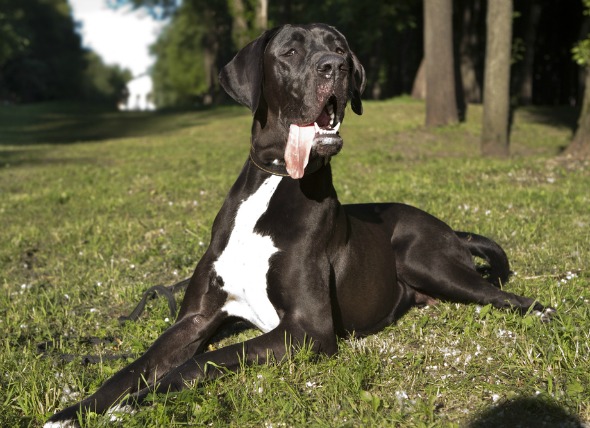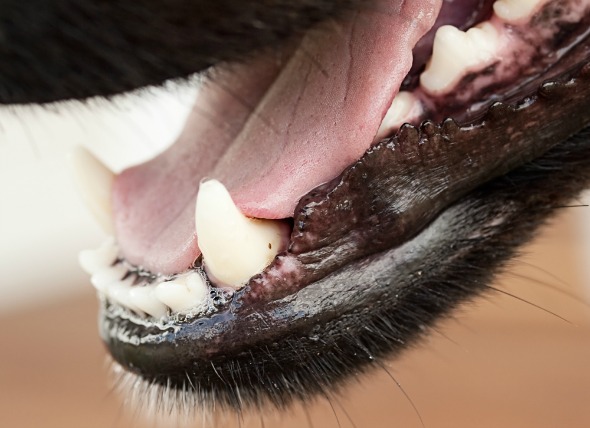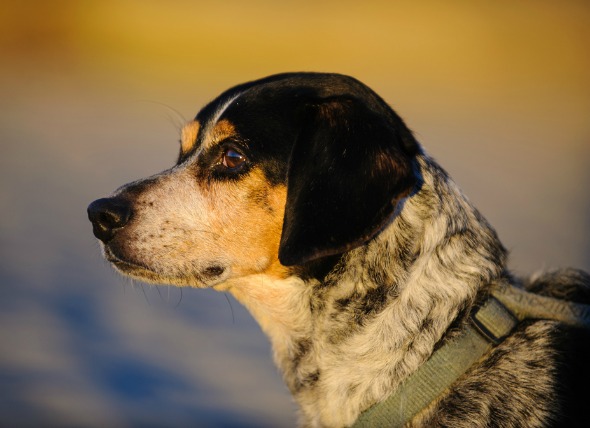

Gastric dilation and volvulus syndrome (GDV), more commonly referred to as gastric torsion or bloat, is a disease in dogs in which the animal’s stomach dilates and then rotates, or twists, around its short axis. A number of emergency conditions may result as a consequence of this gastric rotation, including progressive distension of the stomach, increased pressure within the abdomen, damage to the cardiovascular system, and decreased perfusion. Perfusion is the process of delivering nutrients via blood in the arteries to the body’s tissues. Insufficient perfusion may lead to cellular damage and even organ death.
Symptoms of GDV include anxious behavior, depression, abdominal pain and distention, collapse, excessive drooling, and vomiting to the point of unproductive dry heaving. Further physical examination may also reveal an extremely rapid heart beat (known as tachycardia), labored breathing (known as dyspnea), a weak pulse, and pale mucus membrane (the moist tissues lining the body’s orifices, such as the nose and mouth).
The exact causes of GDV are unknown. A variety of factors, including genetics, anatomy, and environment, are most likely to blame. For example, dogs that have a first relative with a history of GDV have been shown to be at higher risk. Additionally, large and giant-breed dogs may be at higher risk, especially deep-chested breeds such as great Danes, German shepherds, and standard poodles. Although GDV has been reported in puppies, risk does increase with age.
Some factors that are believed to contribute to the development of GDV include ingestion of excessive amounts of food or water, delayed emptying of the gastrointestinal system, and too much activity after eating. In some cases, dogs affected by GDV have a history of gastrointestinal tract problems. It should be noted, however, that these characteristics do not necessarily occur with all cases.
A primary method of diagnosing GDV is imaging techniques, such as x-rays of the abdomen. Other tests may include a urine analysis and testing concentrations of lactate substance in the plasma.
If GDV is not to blame, other possible causes of the patient’s symptoms may include bacterial infection, gastroenteritis (which is the inflammation of the gastrointestinal tract involving both the stomach and small intestine), or “food bloat” due to overeating.
GDV is an emergency condition requiring patients to be hospitalized and aggressively treated. If secondary cardiovascular problems are apparent, they will need to be immediately treated. After the heart is stabilized, gastric decompression can be performed, preferably with orogastric intubation, a process by which a tube is inserted through the patient’s mouth into the stomach. After these processes are complete and the patient is stabilized, surgical measures may be taken to return internal organs (such as the stomach and spleen) to their normal positions. Additional treatment may be needed to address any organ damage. A permanent gastropexy, in which the patient’s stomach is surgically secured to prevent future improper rotation, may be done to prevent recurrence of GDV.
General care after initial treatment includes administration of painkillers, along with any other necessary medications. Activity should be restricted for approximately two weeks, especially after surgery.
While the exact causes of GDV are unknown, there are a number of risk factors that can be addressed, namely avoiding strenuous exercise after eating and drinking. Slowing the rate of food consumption may also help, as well as feeding frequent small portions, rather than infrequent larger portions.
 Pus Cavity Forming Under Tooth in Dogs
Tooth Root (Apical) Abcess in Dogs
Similar to hum
Pus Cavity Forming Under Tooth in Dogs
Tooth Root (Apical) Abcess in Dogs
Similar to hum
 Acne in Dogs
Pustules in Dogs
Much like in teenage humans, acn
Acne in Dogs
Pustules in Dogs
Much like in teenage humans, acn
 Incoordination of the Legs in Dogs
Hypermetria and Dysmetria in Dogs
Dysmetria and h
Incoordination of the Legs in Dogs
Hypermetria and Dysmetria in Dogs
Dysmetria and h
 Liver Inflammation in Dogs
Cholangitis-Cholangiohepatitis Syndrome in Dogs
I
Liver Inflammation in Dogs
Cholangitis-Cholangiohepatitis Syndrome in Dogs
I
 Wart Virus in Dogs
Papillomatosis in Dogs
The term papillomatosis is
Wart Virus in Dogs
Papillomatosis in Dogs
The term papillomatosis is
Copyright © 2005-2016 Pet Information All Rights Reserved
Contact us: www162date@outlook.com